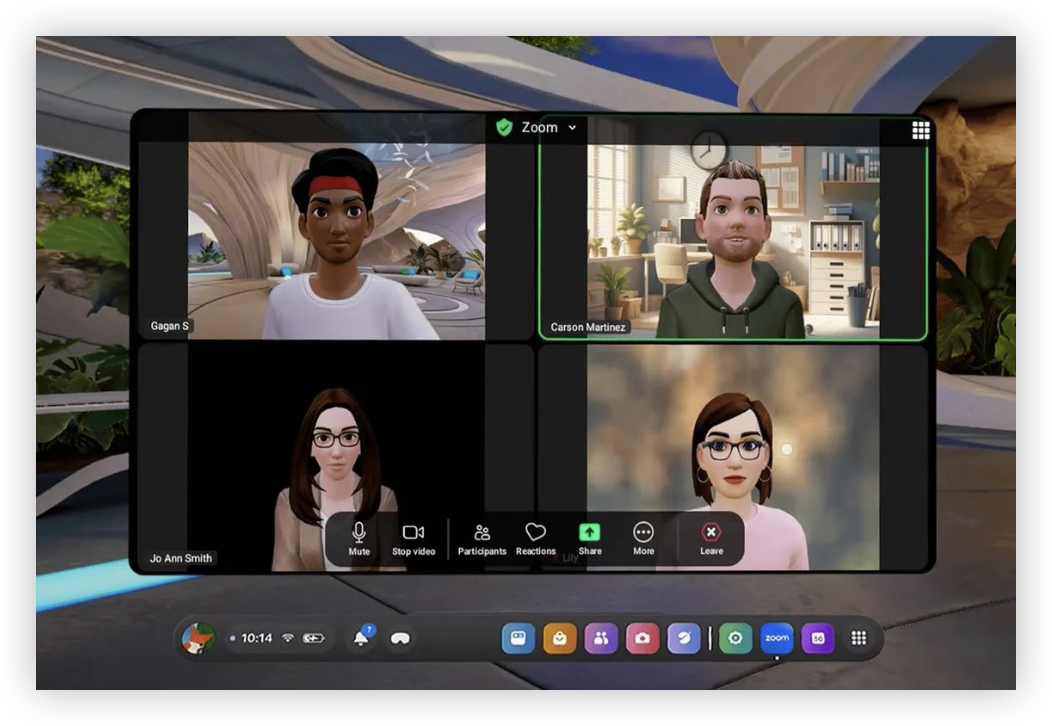Quest Gets Zoom: Are Virtual Avatars the Future of Meetings or Just for Fun?

In the post-pandemic era, remote work has evolved from a stopgap to a new normal, and online meeting tools have become the lifeline of our daily work. Imagine opening a video call and seeing not your colleagues’ real faces, but their unique, cool, or cute virtual avatars. What would that be like? Recently, Meta’s Quest VR headset has made this a reality—the official Zoom app is now available on the Horizon Store, ushering in the era of 'avatar meetings.' Is this another revolution in remote work, or just a whimsical experiment by a tech giant? Let’s find out.
When Avatars Enter the Meeting Room
In recent years, Meta has invested heavily in the metaverse, including immersive collaboration spaces like Horizon Workrooms. There, users can gather as avatars and even project their PC screens into VR for a truly immersive meeting. But Workrooms is focused on building a complete virtual collaboration environment. Now, Meta has brought Zoom—an app we all know—directly to the Quest platform as a standalone app.
This means you don’t need to enter a complex virtual office to join a regular Zoom meeting as your Quest avatar. Instead of immersing you in a virtual meeting room, this new feature captures your Quest avatar and streams it as 2D video to all participants’ screens.
Whether your colleagues join with a traditional webcam or a VR headset, they’ll see your virtual 'self' blinking, nodding, or even making funny faces on screen. This injects a bit of freshness and fun into otherwise serious online meetings.
Free and Convenient: Lowering the Barrier to Entry
Meta’s move is a smart one. It seamlessly integrates a widely accepted meeting tool into the VR ecosystem. For Quest users, the app is free to download and only requires your regular Zoom account to log in, making it easy to try. The biggest draw is convenience—if you want to quickly join a Zoom meeting in VR, you no longer need to take off your headset or switch devices. You can join as your avatar instantly. This plug-and-play experience is sure to attract curious early adopters.
Avatars: Value-Add or Awkward?
But here’s the core question: do we really want to use avatars for meetings? Especially for serious business negotiations, client communications, or situations where professionalism is key. Meta’s Horizon avatars have improved over the years, but they still have a distinctly cartoonish style, lacking the facial detail and emotional nuance of real people.
This stands in stark contrast to Apple’s Vision Pro, which launched in February with its own Zoom support and Persona avatars. Vision Pro’s Persona tech uses high-precision facial capture to create a digital double that closely resembles the user, with impressive realism. By comparison, Quest’s cartoon avatars lag behind in the race for realism.
Of course, not every meeting needs high realism. For daily standups, brainstorming, or informal team chats, a fun cartoon avatar might lighten the mood. But for external communications or situations demanding professionalism, the cartoon style may feel out of place—or even awkward.
The Evolution of VR Meetings: From Immersion to Ubiquity
The Zoom app on Quest is a microcosm of Meta’s broader exploration in VR meetings. From early days when Horizon Workrooms required special hardware, to now bringing mainstream meeting software into VR, Meta is working to make VR meetings more accessible and user-friendly. This reflects Meta’s understanding of different meeting scenarios and user needs: Workrooms targets teams needing deep immersion, while the standalone Zoom app serves a broader audience seeking convenience and novelty.
The Future Is Here—But Needs Refinement
The launch of Zoom for Quest is another milestone in the fusion of VR and remote work. It shows us a possible future for meetings: in the metaverse, our avatars could become the bridge between virtual and real. Free and convenient, it will attract early adopters.
But the road ahead isn’t all smooth. The realism of avatars, user acceptance, and the adoption rate of VR devices will all be key factors in its future. For now, using cartoon avatars in meetings is more of a novelty—maybe just for fun. But as technology advances, especially with more lifelike avatars like Apple’s Persona, we may truly see avatars become mainstream in meetings. When that day comes, will you miss seeing your real self on camera? Time will tell.
分享文章
3篇相关文章
Social VR Cinema: Meta vs Bigscreen – The Battle for the Next Entertainment Frontier
2025-07-04
A recent leak of Meta's Quest theater environment prototype signals its active push into social VR cinema, directly challenging Bigscreen—the long-standing 'king' of VR theaters. This move is not only a key step in Meta's Horizon OS ecosystem strategy but could also reshape the future of VR social entertainment. However, with challenges in content licensing and user-generated streaming, can Meta replicate Bigscreen's core appeal and convert its massive user base into loyal 'cinema audiences'? This article analyzes the leak, explores Meta's strategy, and looks ahead at the prospects and challenges in the social VR cinema race.
Meta and Xbox Launch Limited Edition Quest 3S Headset
2025-06-25
Meta and Xbox have announced the joint launch of a limited edition Meta Quest 3S headset. This device not only features Xbox's iconic color scheme but also integrates Xbox Game Pass Ultimate cloud gaming service, delivering an unprecedented immersive experience for players.
Valve's New Trademark 'STEAM FRAME' Deep Dive: How Will It Reshape Your Gaming World?
2025-09-05
Valve quietly filed a new trademark 'STEAM FRAME' — does it herald the next‑gen home console Fremont, the revolutionary VR headset Deckard, or an entirely new gaming ecosystem?